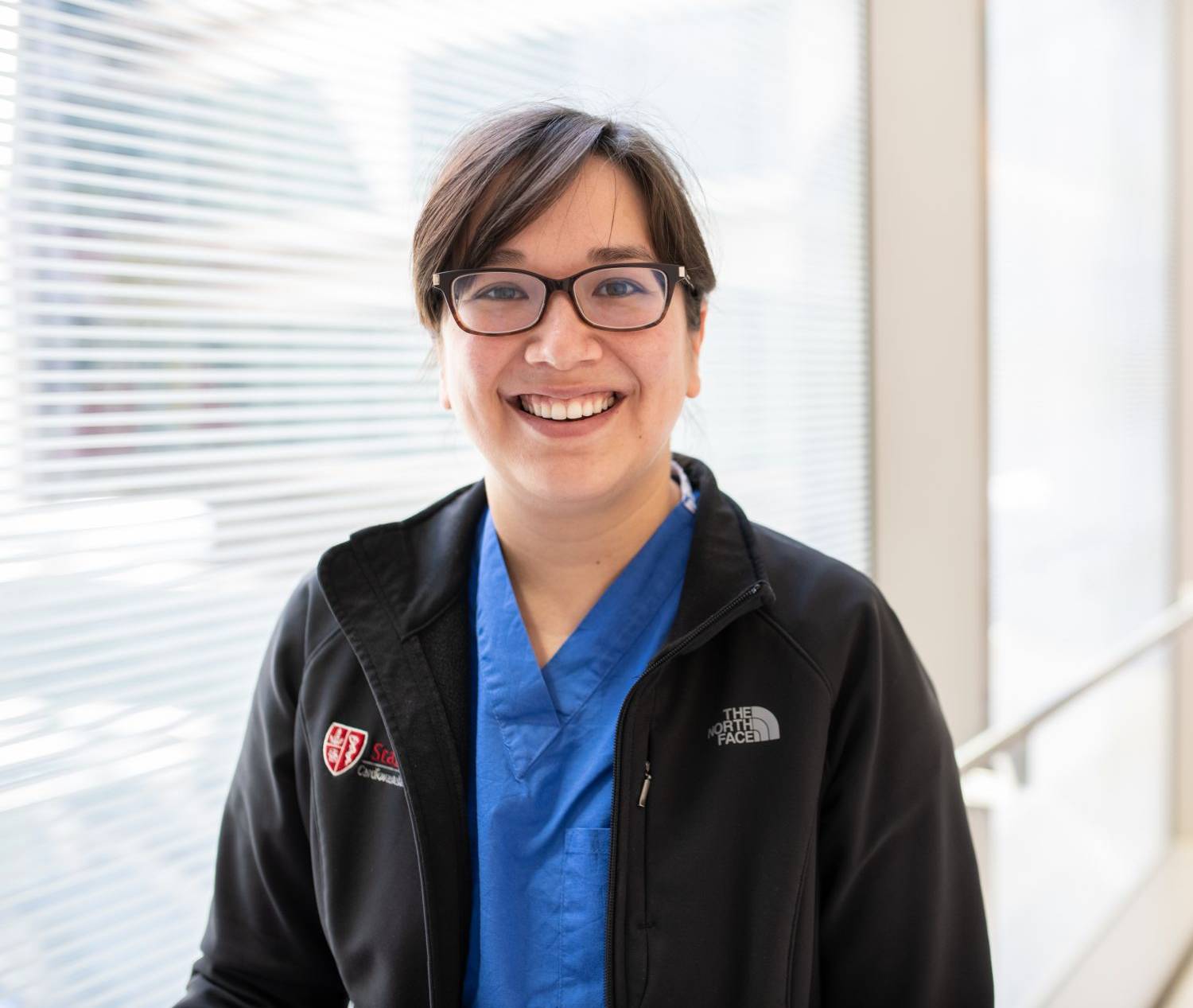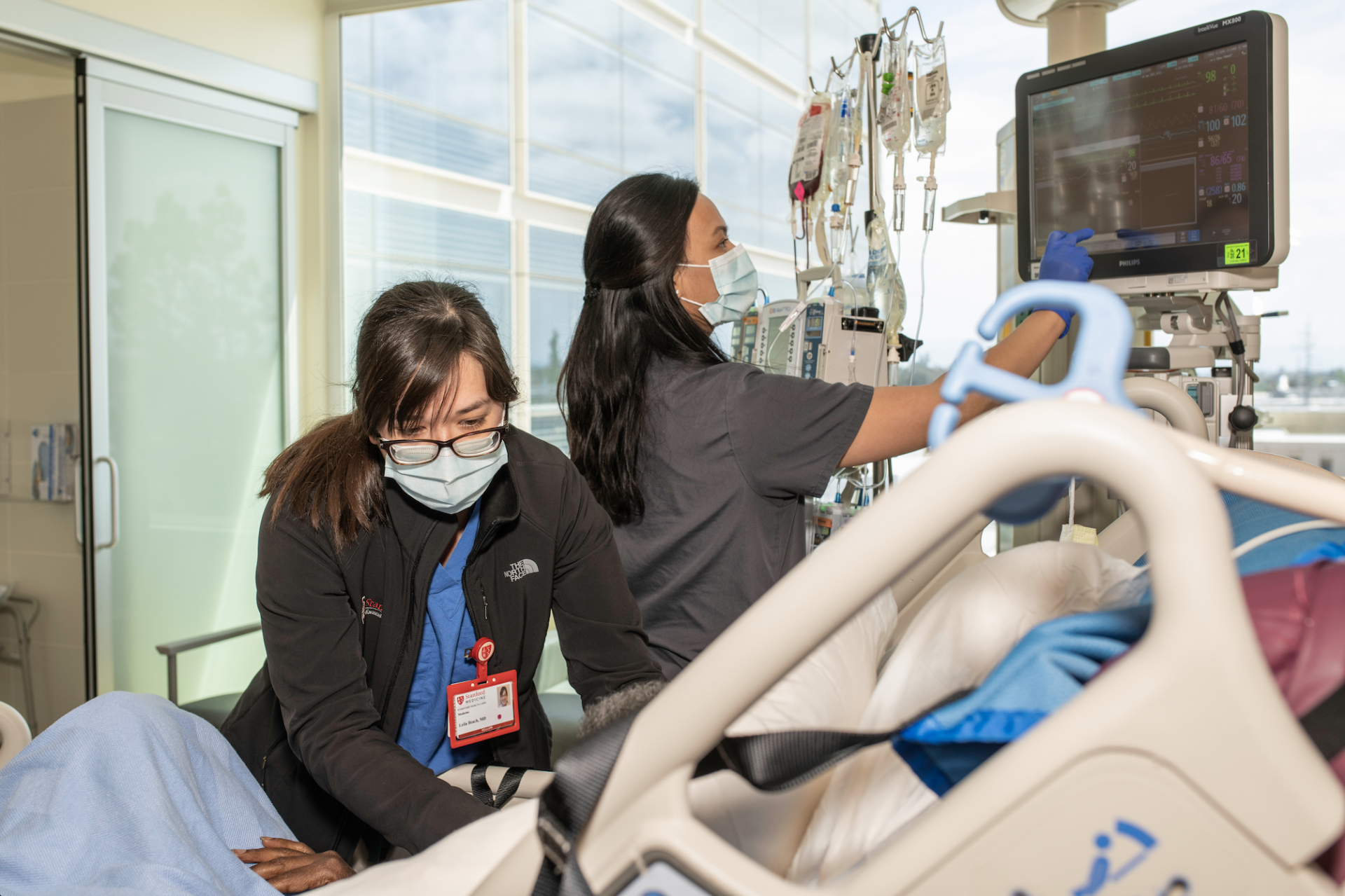A Cardiology Fellow With an Interest in Heart Transplant … and Videography
Leila Yeh Beach, MD, currently in the middle of her third year of a three-year general cardiology fellowship in the division of cardiovascular medicine, has enjoyed the structure of her postdoctoral years thus far.
Beach chose to specialize in cardiology for a few reasons: “First, it was a natural inclination. I was drawn to it, and it’s fun. Second, in cardiology you can do anything from caring for stable patients in an outpatient clinic to working with critically ill patients in the cardiac intensive care unit (ICU). There are also procedural and imaging components; that variety appeals to me. And third, I find cardiology uniquely intuitive and intellectually elegant. I was nervous about pursuing cardiology and applying for fellowship, though. I knew it was a competitive field, and that not as many women go into it. It took me a while to say it out loud and really commit to it.”
In the past few years, Beach received two awards back-to-back, which was an unusual occurrence. First, she received the house staff teaching award, which is voted on by the medicine residents.

Leila Yeh Beach, MD, currently in the middle of her third year of a three-year general cardiology fellowship in the division of cardiovascular medicine, has enjoyed the structure of her postdoctoral years thus far.
Beach chose to specialize in cardiology for a few reasons: “First, it was a natural inclination. I was drawn to it, and it’s fun. Second, in cardiology you can do anything from caring for stable patients in an outpatient clinic to working with critically ill patients in the cardiac intensive care unit (ICU). There are also procedural and imaging components; that variety appeals to me. And third, I find cardiology uniquely intuitive and intellectually elegant. I was nervous about pursuing cardiology and applying for fellowship, though. I knew it was a competitive field, and that not as many women go into it. It took me a while to say it out loud and really commit to it.”
In the past few years, Beach received two awards back-to-back, which was an unusual occurrence. First, she received the house staff teaching award, which is voted on by the medicine residents.
“Being recognized by them was very meaningful,” Beach says. She feels that teaching makes her better at what she does, and she learns as much from the house staff as she teaches.
The second award, the clinical fellow award, differs in that it is voted on by faculty. Beach found it to be “really flattering. I think it could have gone to any of my five co-fellows and been just as well deserved if not more so. It was very lovely to be recognized by the faculty, and it wasn’t something that had been on my radar at all.”
Something else about Beach that is notable is a previously hidden talent for putting snappy music and photos together in a video in an attention-grabbing way. When fellowship recruitment became virtual last year due to COVID-19, the cardiology fellowship leadership was trying to find ways to highlight the strengths of the program. “On a lark,” says Beach, “and maybe as a tool of procrastination from studying for my echo boards, I started looking at video clips of people in the department and cut them together. I tried to showcase the unique and defining features of our program and some of its remarkably rich history. I showed a rough draft to my program director and was quite surprised and flattered by the reaction.” From her procrastination a tool for recruiting fellows was born.
We’re told that Beach’s video went on to inspire similar efforts from other fellowship programs, including Stanford’s Pulmonary, Allergy, and Critical Care Medicine Fellowship Program and UCLA’s Cardiology Fellowship Program.
Fellowship Years
“The first two years of our general cardiology fellowship are heavily clinical,” Beach says. Fellows have rotations, usually for a month, in different core areas of clinical cardiology, providing patient care while learning along the way. They spend time in the catheterization lab doing coronary angiograms, in the echocardiography lab learning how to perform and interpret cardiac ultrasounds, on the patient units doing cardiology consults, and on the cardiac ICU caring for patients. Essentially all of their time in the first two years is spent in clinical training.
The third year is much more flexible, largely earmarked for research. “By and large, this is my research year,” Beach explains. “But I still go to my outpatient clinic to see patients once a week, and I do a couple of weeks of inpatient clinical activity here or there.”
Her particular area of clinical focus is advanced heart failure and transplant cardiology, which she first became interested in while taking care of patients in the cardiac ICU. Beach recalls that “these patients were the sickest of the sick. They often had complex severe cardiac pathology sometimes requiring things like surgically implanted motors to help their heart function or a heart transplant. I really enjoyed caring for them, and it led to my interest in heart failure and transplant.”
Beach has been fortunate to tailor her outpatient clinical experience to the same population of patients as well, working with Michael B. Fowler, MBBS, FRCP, professor of cardiovascular medicine, in his heart failure clinic. Seeing heart failure from both the outpatient and the inpatient perspectives has led her to plan to do an additional fellowship year in advanced heart failure and transplant cardiology, beginning in July 2021.

Leila Beach, MD (left), at a patient bedside with Melissa Garrido, RN, has a clinical focus on advanced heart failure and transplant cardiology
